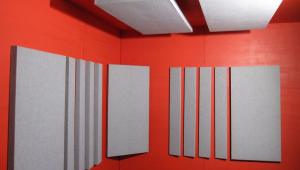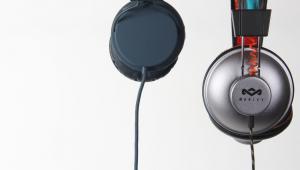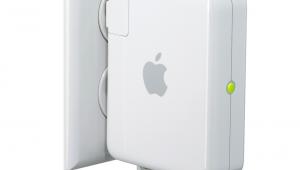For a Song: The $59 Headphone Roundup Page 2
Skullcandy Hesh 2.0 ($59)
The original Skullcandy Hesh represented a revolution in headphone marketing — one I’m sure Skullcandy’s competitors wish they’d thought of. When I checked the website, the Hesh was available in 24 different cosmetic schemes, some super-hip, some sports-related, some just garish. But while the Hesh’s sound has won acclaim from consumers who leave comments like “BLOWS YOUR SKULL OFF” on the company’s website, discerning listeners I know thought the Hesh sounded muffled and overly bassy.
With the hiring of Dr. Tetsuro Oishi — an extremely knowledgeable scientist fresh off a gig at Bose — as its new director of electrical and acoustic engineering, Skullcandy seems to be getting serious about sound. The Hesh 2.0 is Tet’s first major effort, an attempt to refine the sound of the headphone without losing the love of those who write their user reviews with the caps lock on.
Like the original Hesh, the 2.0 (which at press time wasn’t yet up on the company’s website) has a somewhat bulky, plasticky look, but it’s a sleeker design. It’s the only headphone in this test that’s an over-ear, as opposed to on-ear, design, so it’s likely to give you better isolation from external noise. The detachable cable has 3.5mm plugs on both ends so it’s easy to replace. An inline mic will cost you an extra $10.
The ear cups tilt slightly up and down for better fit, but I found myself wishing they swiveled in every direction; I noted a little bit of leakage around the sides of the pads. Lauren noted when she moved the earpieces around her ears to adjust the fit that the pads made a loud, annoying crinkling sound when she released them.
The Hesh 2.0’s sound earned both raves and pans from the panel. Joe ranked it #1, Lauren ranked it #6, and Howard and I put it in the middle.
The 2.0 retains the bass-heavy balance of its predecessor — Howard and Lauren noted a boomy resonance in the bottom end, which made the bass sound sloppy. However, based on my memory of the original Hesh, the 2.0’s mids are much clearer. In fact, I’d rank its fidelity with voices at least the equal any headphone in this test. The powerful bass did seem to have the subjective effect of dulling the highs somewhat, reducing the apparent treble detail, but to some ears the sound is definitely appealing: “It made music sound the way I wanted it to,” Joe said.
The Hesh 2.0’s tonal balance didn’t work for most of the music I listen to, but when I put on Mötley Crüe’s “Kickstart My Heart” and The Cult’s “King Contrary Man,” the 2.0 outclassed all the other headphones we tested, with a lot more dynamics and drive, and a big, exciting sound.
Measurements: The Hesh 2.0’s frequency response is definitely tilted toward the bass and lower midrange; treble response rolls off pretty fast above 2 kHz. Adding 70 ohms output impedance to the V-Can’s 5 ohms to simulate the effects of using a low-quality amplifier had only a mild effect, boosting bass by +1 to +1.5 dB below 60 Hz. Total harmonic distortion (THD) is rather high, hitting 7% at 20 Hz at 80 dBA and really spiking below 45 Hz at 100 dBA. (I know the measurement looks weird, but I repeated it several times and double-checked my calibration, and I did this measurement at the same time and with the same method as all the others.) Impedance is close to flat, averaging 35 ohms. Isolation is just OK, maybe a tad below average for an over-ear, measuring -10 to -25 dB above 1.3 kHz. Average sensitivity from 300 Hz to 10 kHz with a 1 mW signal at the rated 35 ohms impedance is 99.4 dB.
Bottom Line: For heavy rock and hip-hop, the Hesh’s balance seems perfect. If that’s the kind of music you dig, you’ll probably love the Hesh 2.0 — and it’s a sure thing Skullcandy will offer it with graphics that suit your style as much as the sound suits your taste.





























































